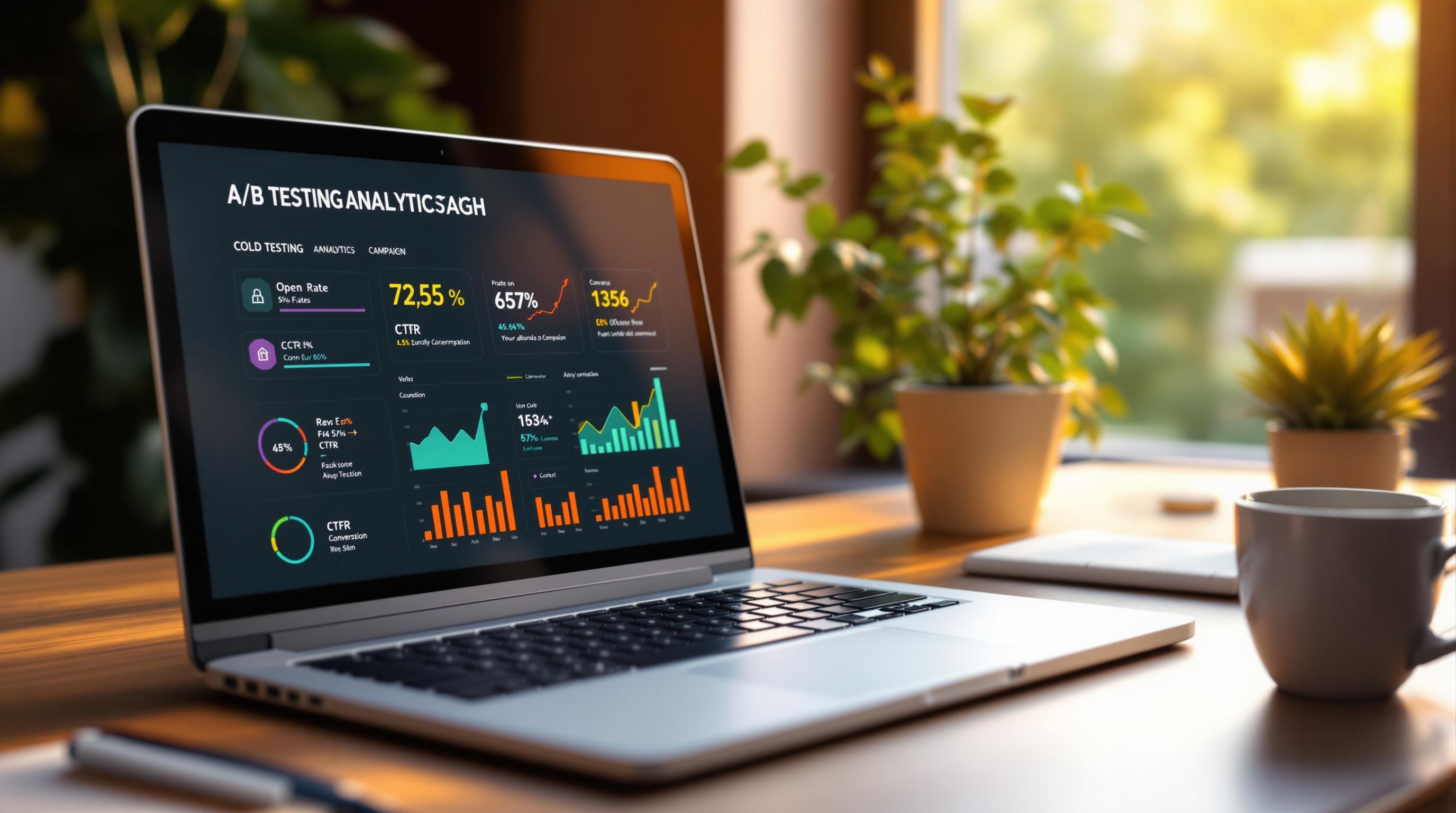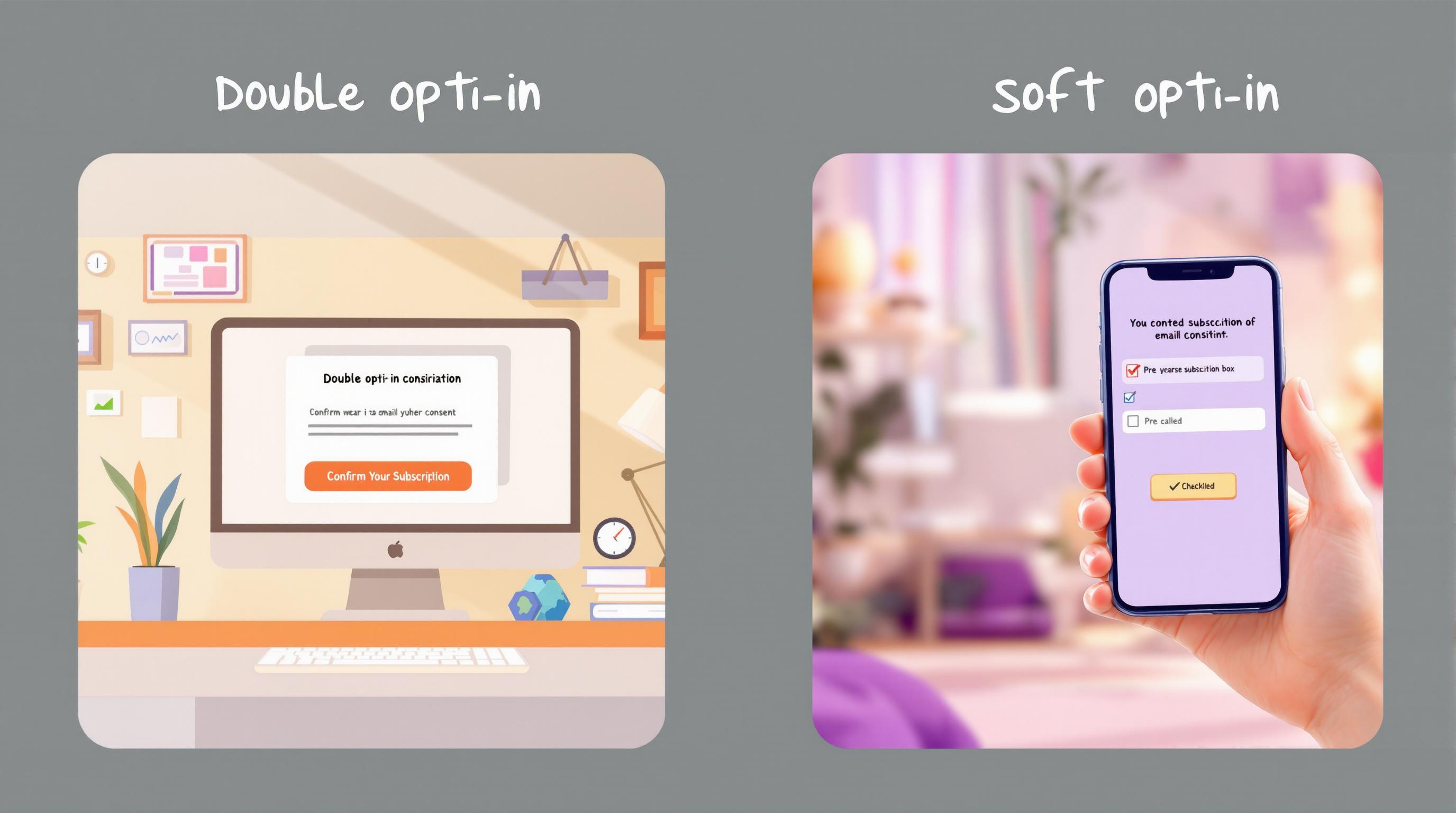GDPR compliance is essential for protecting user data, avoiding fines (up to €20 million or 4% of global revenue), and building trust with subscribers. Here's how to ensure your email list follows GDPR rules:
- Audit Your Email List: Review subscriber data for accuracy, remove outdated or irrelevant information, and document consent details (who, when, how, and why).
- Get Proper Consent: Use clear, simple consent forms, implement double opt-in processes, and provide a transparent privacy policy.
- Simplify Opt-In/Opt-Out: Avoid pre-checked boxes, include clear opt-in statements, and ensure easy, quick opt-out options in all emails.
- Keep Data Updated: Automate list maintenance, remove inactive emails, and segment subscribers based on consent types and preferences.
- Respect User Rights: Allow users to access, update, or delete their data easily, and maintain detailed records of all data handling activities.
Key GDPR Practices:
- Regularly review consent records.
- Automate updates and streamline opt-out processes.
- Use tools like Simplelists or Brevo to simplify compliance.
Step 1: Audit Your Email List for GDPR Compliance
The first step to achieving GDPR compliance is to carefully review your current email list. This helps you spot any compliance issues and lays the groundwork for better data handling.
Check and Record Subscriber Information
Start by reviewing your subscriber records. Make sure they include accurate and complete details, such as identifying information, consent specifics, and granted permissions. Keep a clear record of who gave consent, when they did, how it was obtained, and why they agreed.
Accurate data records not only reduce errors but also help demonstrate GDPR compliance. Using email management tools with GDPR features can simplify this process and ensure detailed records are kept [3].
Clear Out Old or Irrelevant Data
Follow GDPR’s data minimization rule by removing outdated, duplicate, or unnecessary subscriber information. Automate this process to regularly flag and delete data that’s no longer relevant to your needs.
Failing to audit your email list properly could lead to penalties as high as €20 million or 4% of your global revenue [1]. Regular audits not only safeguard your business but also show subscribers you’re serious about protecting their privacy.
Once your email list is cleaned up, the next step is ensuring you’re collecting and storing user consent the right way.
Step 2: Get and Store Proper User Consent
After reviewing your email list, the next step is setting up a system to collect and manage user consent in a transparent and lawful way. This is a key part of staying compliant with GDPR regulations.
Use Clear and Simple Consent Forms
Your consent forms should be straightforward and clearly explain what users are agreeing to. Include details like why you're collecting their data, how it will be used, and their right to opt out.
| Required Element | Description | Example Implementation |
|---|---|---|
| Purpose and Action | Clearly explain why you're collecting data and require users to actively agree | "□ Yes, I agree to receive marketing emails" |
| Data Usage | Be transparent about how the data will be used | "Your email will not be shared with third parties" |
| Withdrawal Rights | Inform users about their right to opt out | "You can unsubscribe anytime" |
Making the consent process clear and simple not only helps you comply with the law but also builds trust with your audience.
Set Up Double Opt-In Processes
A double opt-in process adds an extra layer of confirmation. After signing up, users receive a verification email to confirm their subscription. This ensures that only users who genuinely want to subscribe are added to your list.
Inform Users About Data Usage
Provide a clear and concise privacy policy. This should explain what data you collect, how long you keep it, who you share it with, and how users can request access or deletion of their data. Place a link to this policy near your consent form for easy access.
Once your consent system is in place, make sure users can easily opt in or out of your communications whenever they choose. This keeps your process user-friendly and compliant.
Step 3: Make Opt-In and Opt-Out Simple
Keeping your opt-in and opt-out processes straightforward isn't just smart - it's required under GDPR. A clear system protects your business and respects your subscribers' choices.
Design Clear Opt-In Forms
Your opt-in forms should be simple and transparent, leaving no room for confusion. Here's what to include:
| Element | Example Implementation |
|---|---|
| Consent Statement | "□ I agree to receive monthly newsletters" |
| Data Usage | "□ I understand my email will be used for product updates" |
| Privacy Policy | "View our Privacy Policy" (as clickable link) |
Avoid pre-checked boxes - they don't comply with GDPR rules [2]. Users must actively select to opt in.
Make Opt-Out Options Easy and Quick
Every email should include an easy-to-spot unsubscribe link, usually in the footer. Once someone opts out, process their request within 48 hours to stay compliant and maintain trust. A short confirmation message like "You've been unsubscribed successfully" helps reassure them [1][4].
Using email management tools with automated opt-in and opt-out features can save time and ensure compliance [1][5]. These tools handle updates to your lists and keep accurate records of subscriber preferences.
Once your opt-in and opt-out processes are set, the focus shifts to keeping your email list accurate and up-to-date.
sbb-itb-8abf799
Step 4: Keep Your Email List Updated
Keeping your email list up-to-date is essential for staying GDPR-compliant and running effective email campaigns. A clean, organized list reduces the risk of data breaches and ensures you're only reaching out to subscribers who have actively given their consent.
Automate List Maintenance
Use tools to streamline the process of keeping your list accurate. These tools can:
- Remove inactive email addresses
- Handle hard bounces automatically
- Flag soft bounces for review
Set up regular reports to track these activities and provide proof of compliance if required [1][3].
Segment Your List Smartly
Segmenting your list helps you stay GDPR-compliant by ensuring data is used only for the purposes subscribers have approved. Consider dividing your list based on:
- Consent type: What kind of emails they’ve agreed to receive
- Engagement level: How often they open or click your emails
- Content preferences: Topics they’ve shown interest in
Keep detailed records of how you segment your list to demonstrate compliance with GDPR's rules [2][6].
Use AI for Better Email Management
AI tools can make email list management easier and more efficient. They can help with automating updates, refining segmentation, and ensuring GDPR compliance. When using AI, make sure to:
- Adjust privacy settings to follow GDPR guidelines
- Be transparent about how data is processed
- Keep detailed consent records
"GDPR compliance is not just about avoiding fines; it's about building trust with your customers and enhancing user engagement." - Simplelists, "GDPR Compliance For Email Lists" [1]
Keep an eye on your automated systems to ensure they continue to meet GDPR standards. A well-maintained email list not only keeps you compliant but also boosts the relevance and impact of your campaigns.
Step 5: Be Transparent and Respect User Rights
Being open and respecting user rights are key to staying GDPR compliant. When handling email lists, you need to give users control over their personal data and keep clear records. This not only helps with compliance but also strengthens trust and engagement with your subscribers.
Allow Users to Access and Manage Their Data
Make it easy for subscribers to view, update, download, or delete their personal data. Provide a simple portal for these actions, and include links to it in every marketing email. Automate routine requests to save time, but handle more complex cases manually to ensure accuracy and care.
Keep Detailed Records for Compliance
Track and store records of consent, such as the date, source, and type of consent given. Document your processing activities, including the purpose, data categories, and who receives the data. Record user requests, noting what was asked, how quickly you responded, and what actions were taken. Keep these records for at least 24 months. Additionally, log your data security practices and any agreements involving third-party data sharing to stay accountable and transparent.
Steps to Keep Your Email List GDPR-Compliant
Key GDPR Compliance Practices
Keeping your email list aligned with GDPR is all about safeguarding subscriber trust while protecting your business interests. The five steps outlined offer a straightforward approach to handling subscriber data responsibly. Conducting regular audits, securing proper consent, and maintaining clear data practices are essential for a privacy-focused email marketing strategy. These actions can improve both email deliverability and subscriber engagement [3].
Immediate Actions for Businesses
Here’s what you should focus on right away:
- Review and update consent records to ensure they are accurate and up-to-date.
- Revise privacy notices to make your data usage policies clear and transparent.
- Automate list updates and streamline opt-out processes.
Using automation tools (as highlighted in Step 4) can simplify tasks like consent tracking and list management [1]. If you're using email management or data extraction tools, always secure explicit consent before adding anyone to your marketing lists [1][2].
The secret to staying GDPR-compliant is to integrate these practices into your everyday operations. Treating compliance as an ongoing process, rather than a one-off task, ensures your email marketing remains effective while respecting privacy. Regularly revisiting and refining your email practices strengthens compliance and fosters better connections with your audience [3][7].



